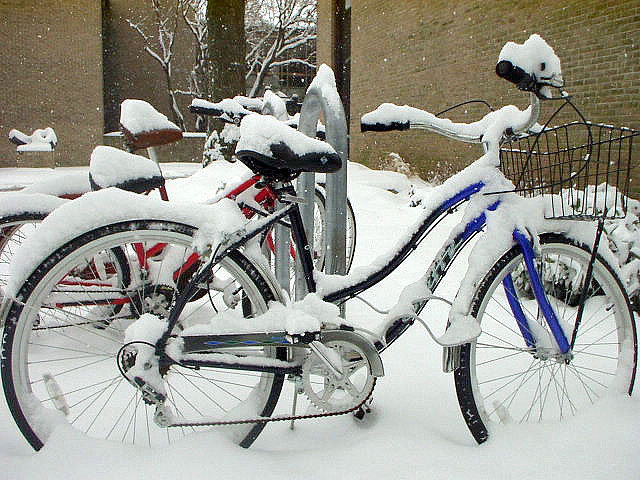Winter Biking: How to Stay Warm
Posted by BikeAttack on Feb 1st 2016
Beware of Hypothermia
Just because it's cold outside doesn't necessarily mean that you have to stop biking. Granted, the bone-chilling temperatures can make it more difficult, but with the right gear and the right approach you can comfortably manage winter biking.
Before reveal how to stay warm when biking, let's first discuss the biggest threat posed by winter biking: hypothermia. As you may already know, hypothermia is a serious medical condition that's characterized by a loss of body heat -- faster than what the body can produce It begins with shivering, and as the condition progresses it leads to a loss of motor controls and eventually organ failure.
It's important to note that the human body loses heat 25 times faster when wet. So whether you are biking, jogging, running, or doing any other physical activity outdoors this winter, it's imperative that you stay dry. Wearing wet clothes when the temperatures are sub-freezing can send your body into a hypothermic state.
Wear Loose Clothing
The key thing to remember when biking during the winter is to wear loose-fitted clothing. Why is this important? Well, compression shirts and leggings are preferred for the summer, as they increase blood flow throughout the body, which subsequently helps with muscle growth and recovery. During the winter, however, wearing compression and other tight-fitted clothes will prevent your body from sweating. You will still perspire, but it will remain on your skin instead of rolling off. This can increase your risk of hypothermia since the moisture remains "stuck" to your skin. So to prevent this from happening, it's recommended that you wear loose-fitted clothing when biking during the winter.
Moisture-Wicking Layers
Generally speaking, it's best to avoid cotton and wool apparel when biking during the winter. These fabrics have a tendency to absorb moisture, further increasing your risk of hypothermia. A better approach is to wear multiple layers consisting of moisture-wicking garments, such as those made of synthetic fabrics like polyester and polyester blends. These garments work to "wick" moisture away from your body.
When you sweat -- and you will sweat when biking regardless of how cold it is -- the moisture will bead up on the fabric before dripping down. Of course, this is a good thing, as it keeps moisture away from your body to protect you from hypothermia. A base layer with a couple outer layers should suffice, assuming they are made of a moisture-wicking fabric.

